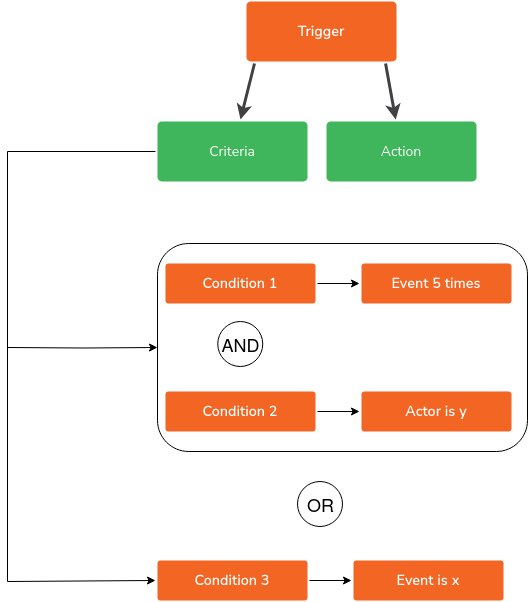Triggers
Tallyfy Manufactory supports near real-time triggers, sometimes called event-based triggers.
This is unique - because many other systems don’t give you the ability to act quickly on incoming data patterns.
Event-based triggers fire based on actor actions. For example, a trigger could be set up to fire when an actor logs in or logs out, or when an actor takes a specific action within a system or application with or without a specific time-frame or even a specific occurrence count.
A Manufactory trigger includes:
- A condition is a specific rule or set of rules that must be met for the trigger to fire.
- A criteria is a specific set of conditions that must be met for the trigger to be executed.
Conditions can be based on various factors, like actor actions, system events or updating actor’s attributes. For example, a condition could be set up to trigger a notification when a certain amount of time has passed since an actor last logged into an application, or when a specific event is stored.
Criteria, on the other hand, are a set of conditions that must be met for the trigger to be executed. For example, a criteria could be set up to trigger an alert when a user logs in from an unrecognized device and is trying to access sensitive data. In this case, the criteria could include conditions like the user’s location, the type of device being used, and the time of day.
For additional information about triggers, contact us

Manufactory > Use cases and Pro integration
Best Practices > What is observability?
Best Practices > Setting up effective alerts and SLOs
Was this helpful?
- 2025 Tallyfy, Inc.
- Privacy Policy
- Terms of Use
- Report Issue
- Trademarks